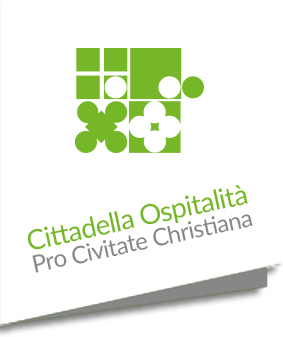The Park of Mount Subasio, the paths of S. Francesco… the mystical power of a past that keeps repeating. Mount Subasio is still there, lying between Heaven and Earth, just as a promise. The natural setting of the historical centres of Assisi, Spello, Valtopina and Nocera Umbra are the right places to find moments of peace and spirituality.
Along the northern side, Mount Subasio borders the lower Umbrian Valley and dominates the wide landscape from its 1290 meters of height. Everybody considers it “the mountain of Assisi” because the city and its mountain live in a sort of symbiosis handed down from antiquity. This mutuality has even been strengthened and rooted across the centuries.
Since the X Century B.C., the Mount increasingly assumed a sacred and mystic nature for the citizens of Umbria, and these elements of spirituality have been strengthened and characterized by S. Francesco and the presence of his monastic order. The entire historic centre of Assisi is located within the Park, hence, it characterizes its natural and historical-cultural values (to the point that the Protected Natural Area could also be called “Park of Assisi”). The city is built with white and pink stone from its Mountain. The geomorphological balance and the faunistic/vegetational value of Mount Subasio are determined by being the principal mountain from which Assisi drew its resources: stone materials, wood and pasture products.
The Park of Mount Subasio is formed by its homonymous mountain system, and it represents a protected area. From the olive groves on the slopes, it rises up to medium altitudes (oaks woods, hornbeams, ashes, maples and downy oaks) until the summit, where you can find meadows and pastures, characterized by karstic phenomena and a flat terrain – according to the conformation of the mountain, whose shape is like that of a whale. Apart from the occasional presence of the wolves, the fauna includes the classic species that can be typically found in the Italian woods: porcupine, fox, badger, wild boar, weasel, but also partridge and wild cat.
However, one of the Park’s greatest values is its historical and artistic heritage: not only the well-known municipalities of Assisi and Spello, but also the less popular abbeys, castles and small fortified villages scattered throughout the territory. They can be explored by car, by bike, on horseback and on foot – which is the most Franciscan way of them all.
Numerous paths are equipped with shelters and staging points. There is also a Literary Park with 10 paths, each one inspired by a verse of the “Cantico delle Creature” (Canticle of the Creatures): this represents an extraordinary document of admiration and love for nature and for the mount of S. Francesco. The itinerary was created by the Fondazione Ippolito Nievo di Roma (Ippolito Nievo Foundation of Rome) in collaboration with the Comunità dei frati minori di S. Damiano (Community of the Friars Minor of St. Damien); it is not necessary to be a formidable walker to climb from Assisi: you can start by leaving the city from Porta Perlici, then keep proceeding along the road to Armenzano up to Ca ‘Piombino (the Park’s administrative office). There you can visit the “Mostra geopaleontologica permanente del monte Subasio” (Permanent Exhibition of Mount Subasio Geopaleontology), in order to understand the morphology and especially the geological history of the Mount: here you can have the pleasure to observe silicified woods, pyritised ammonites, insects in amber and footprints of ancient reptiles. From here, you can reach Costa di Trex (5 km in total). Along the state road 444 – specifically in Pian della Pieve, you can enjoy the “Mostra permanente degli Antichi Mestieri e della Civiltà Contadina” (Permanent Exhibition of Ancient Crafts and Rural Life).
A richer tour itinerary, which can be also made by car, is that of 39 km. Starting the tour from Assisi, take the road to the Eremo delle Carceri. After crossing it, keep proceeding uphill along the ancient dirt road, up to the top, where you can admire a vast prairie with rises and a formidable view of the Apennine peaks. Then descend along the white hairpin bends, between pastures of stones and wild horses, until you reach the “Santuario della Madonna della Spella” (this sanctuary is the favourite shelter of the scouts and the citizens of Assisi who go there to relax on Sundays); on the road you can encounter the Mortaro Grande and the Mortaro Piccolo, two dry dolines once used for the conservation of snow and the production of ice. The descent will lead you to the walled village of Collepino, with its traditional houses made of pink stone of Subasio. Proceed towards Armenzano along the paved road, stopping over the small church of S. Silvestro which consists of ancient remains of an XI Century monastery, period to which the crypt dates back to (it has been preserved thanks to the reuse of Roman building materials). The hamlet of Armenzano retains its perfectly circular form of fortified farming village. Then, the road cuts through the wooded northern slopes of Mount Subasio: at this point, it is worth passing through Costa di Trex and Ca ‘Piombino, and finally get back to Assisi.
Regional Natural Park of Mount Subasio
Protected area: 7,442.00 ha
Province: Perugia
Municipalities: Assisi, Nocera Umbra, Spello, Valtopina
Type: Apennine-calcareous relief
Visitors centre: Mostra geopaleontologica permanente del Monte Subasio (Permanent Exhibition of Mount Subasio Geopaleontology) – tours available upon reservation
Headquarters: locality of Cà Piombino, provincial road for Armenzano – 06081 Assisi (PG) – Tel. 07/5815181
Timetable: weekdays from 9:00 to 13: 00 / in August also on Sundays from 9:30 to 12:30 and from 15:30 to 18:00
